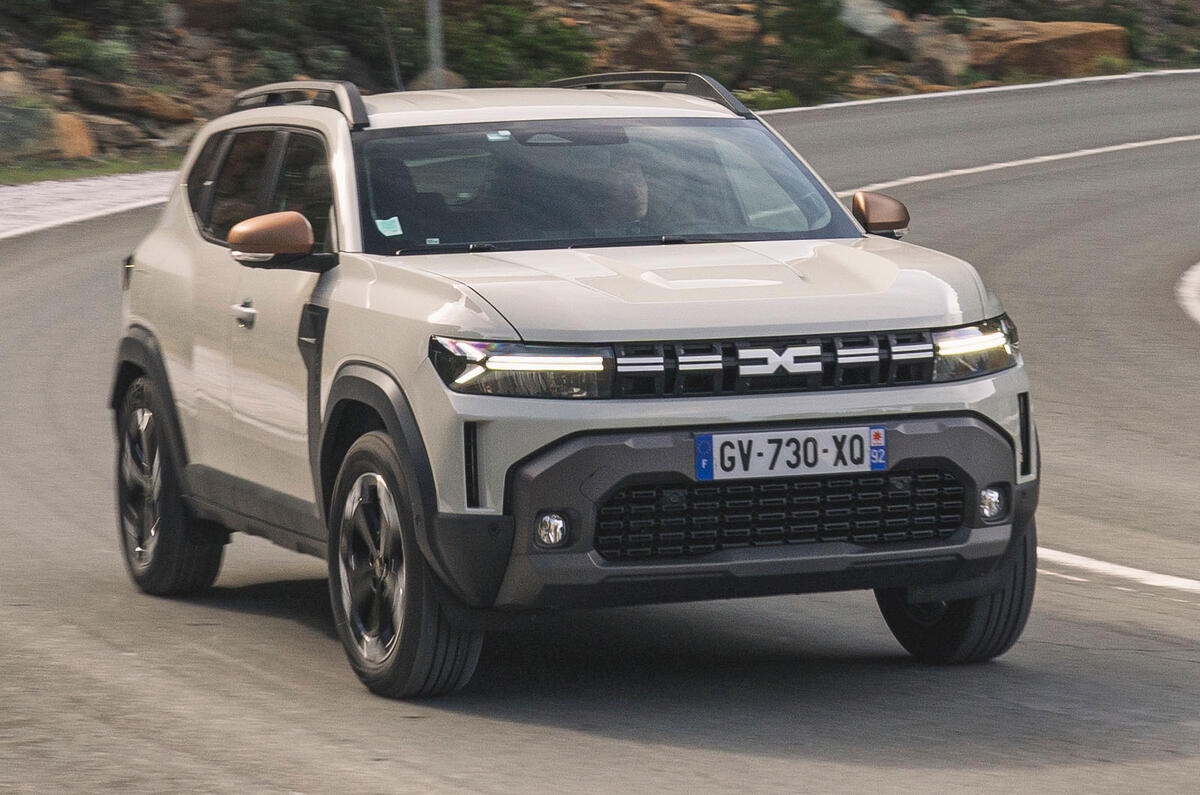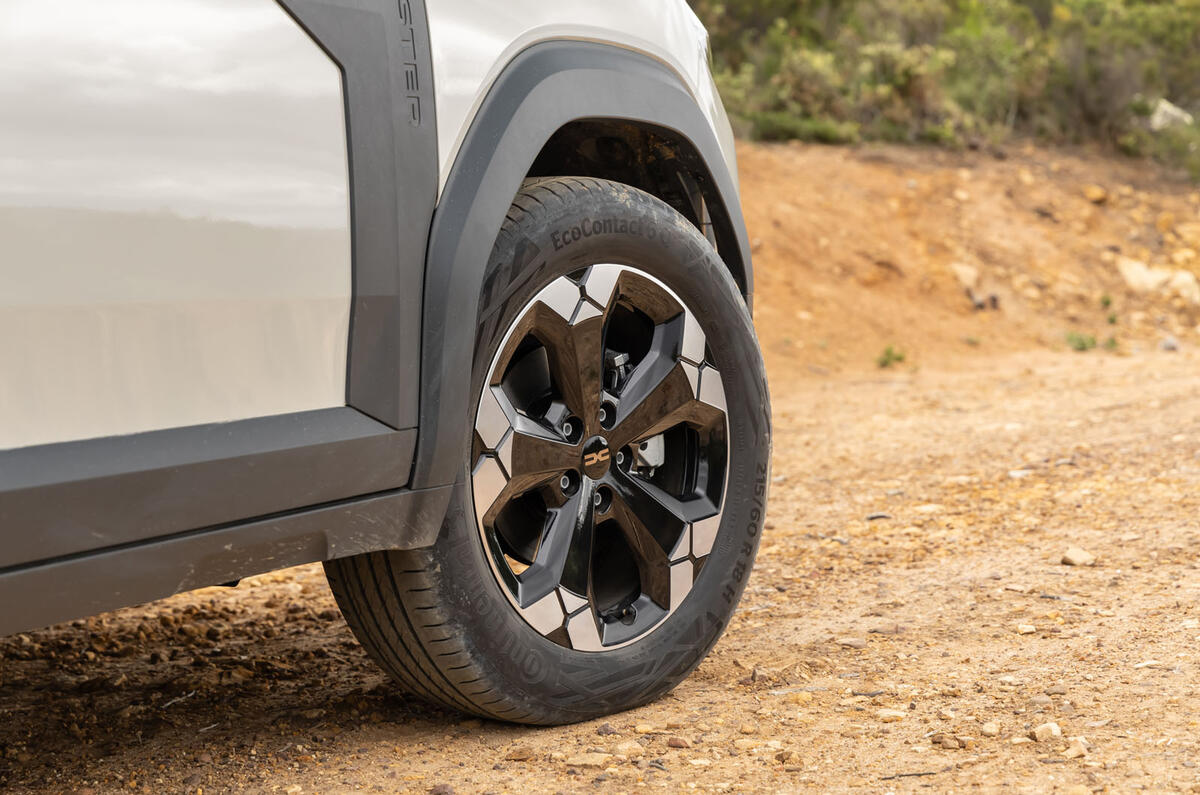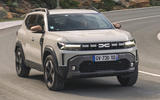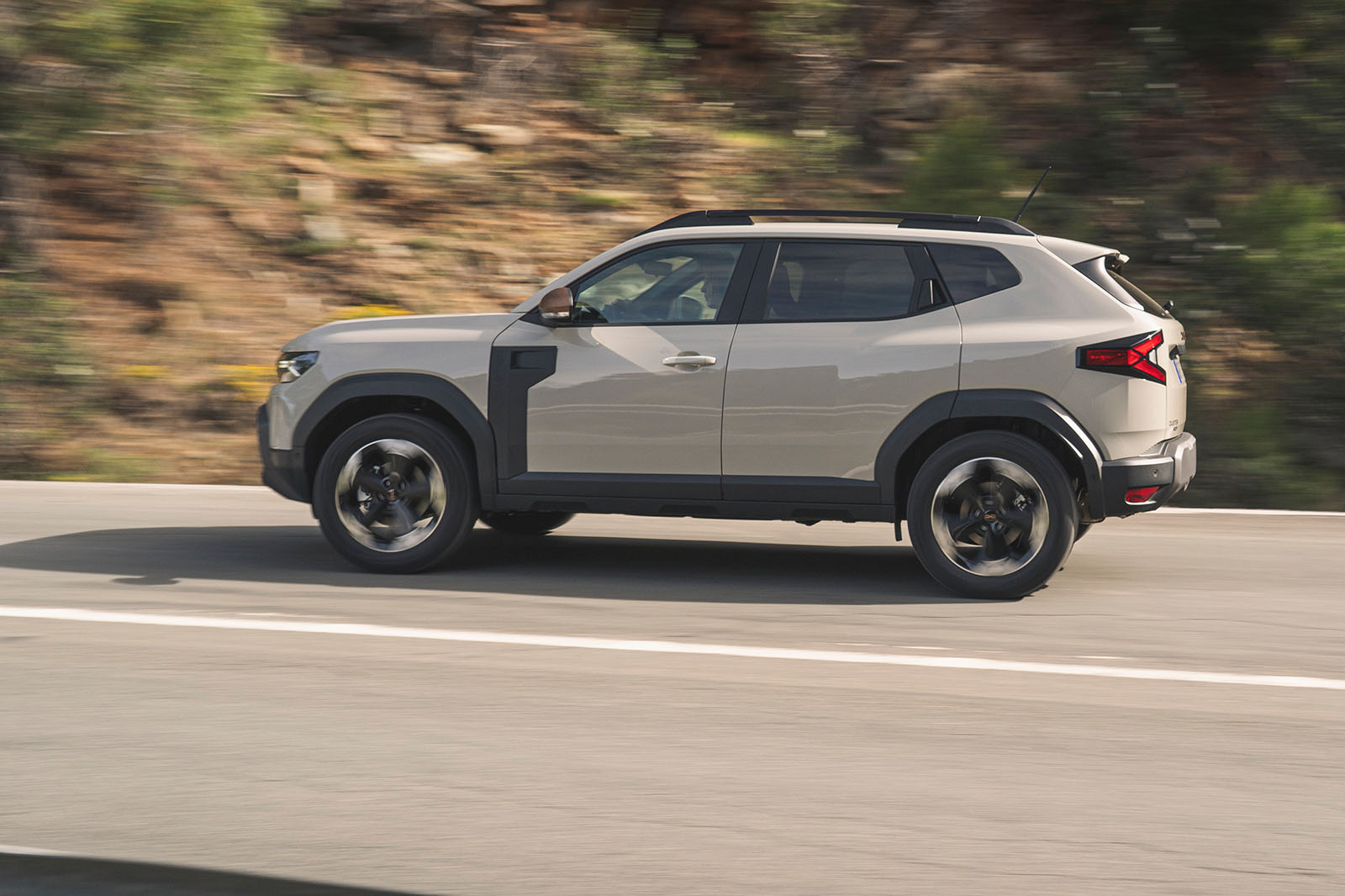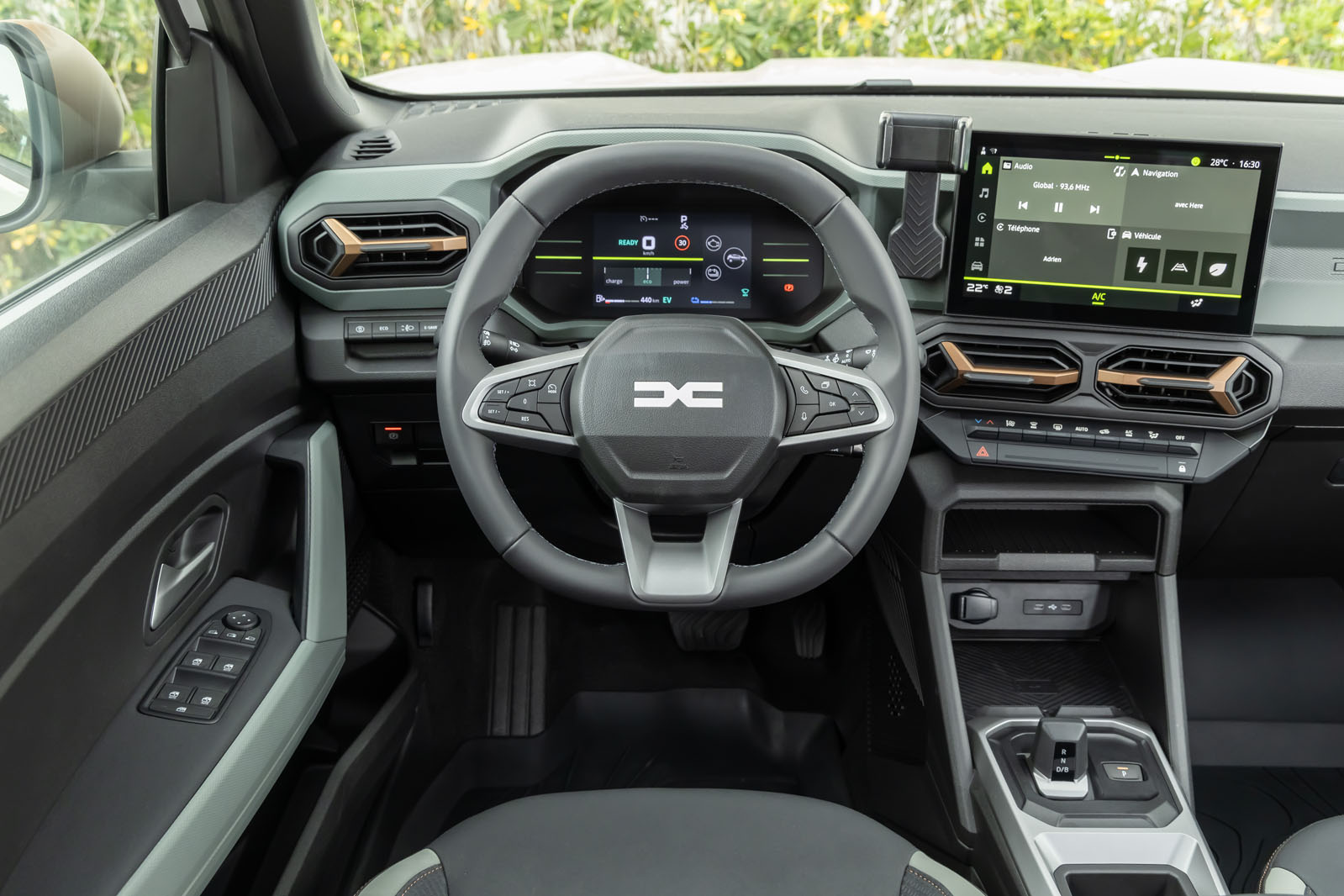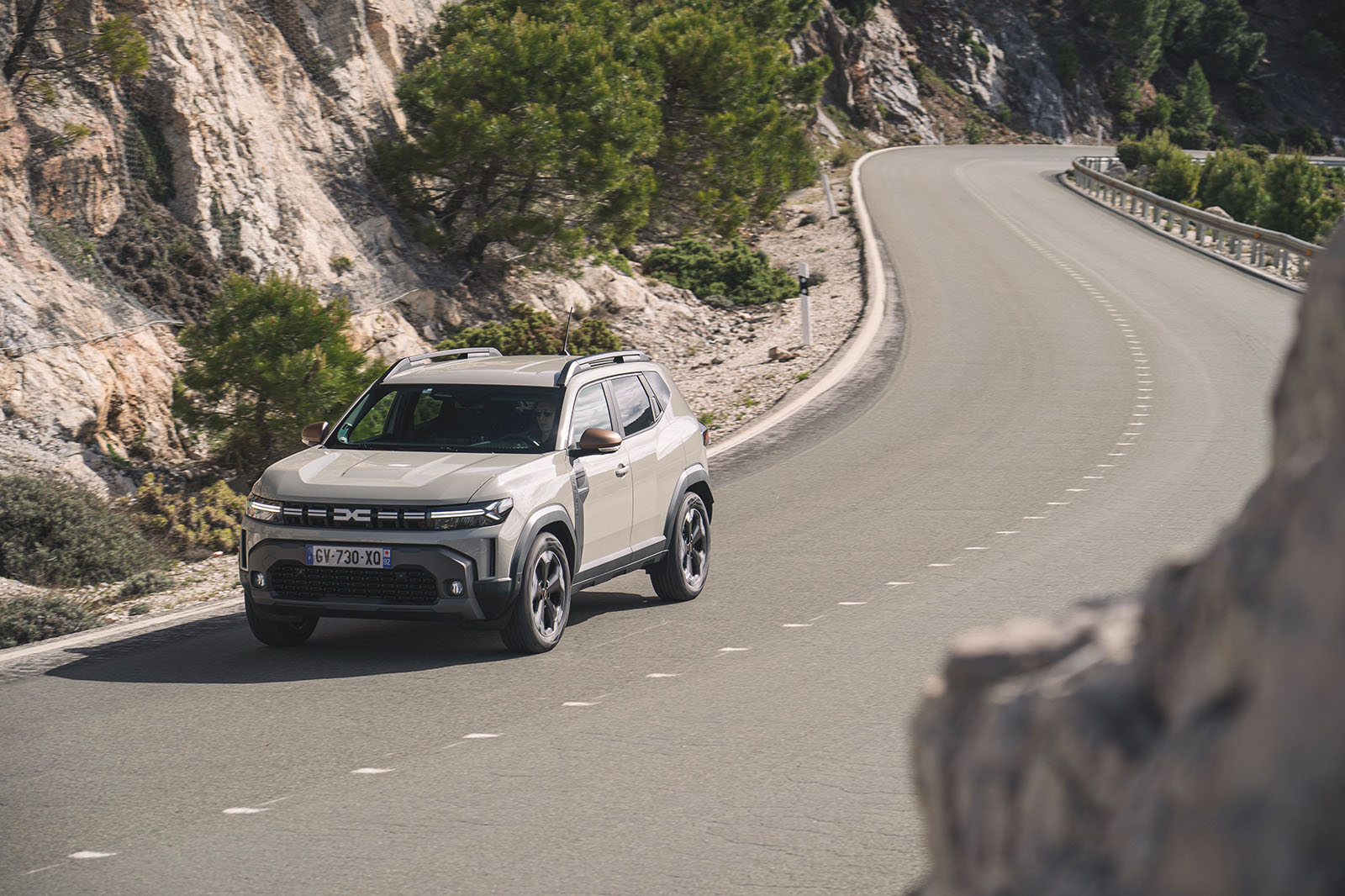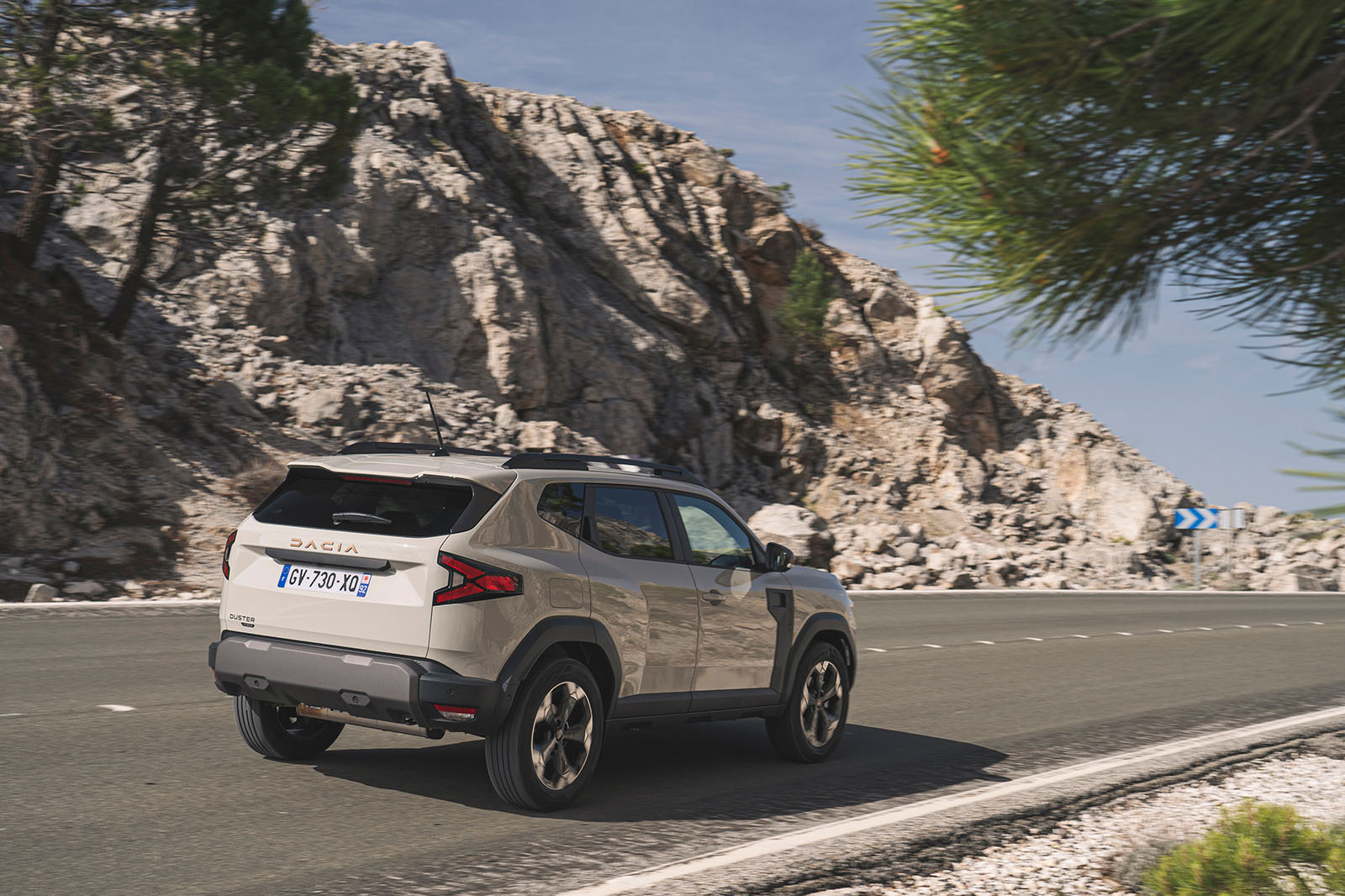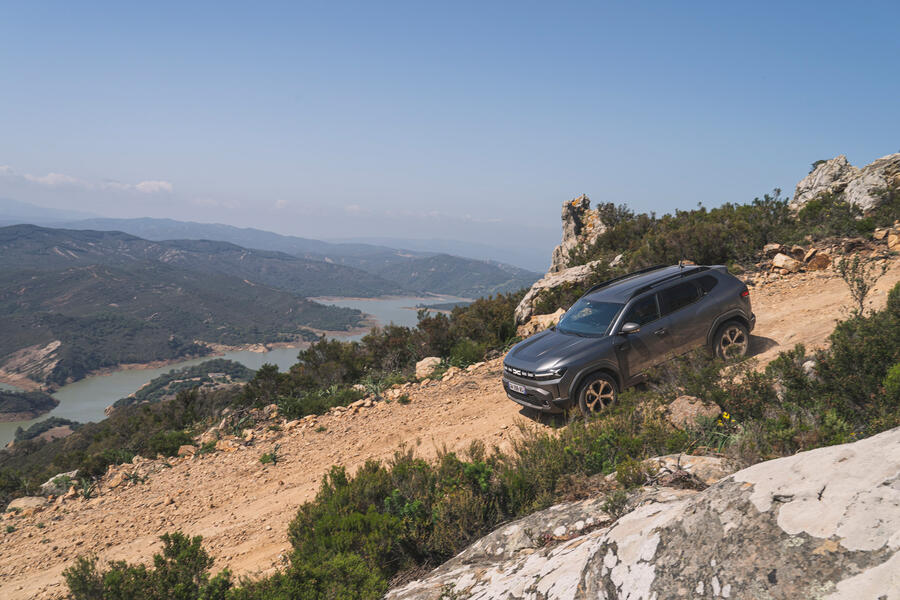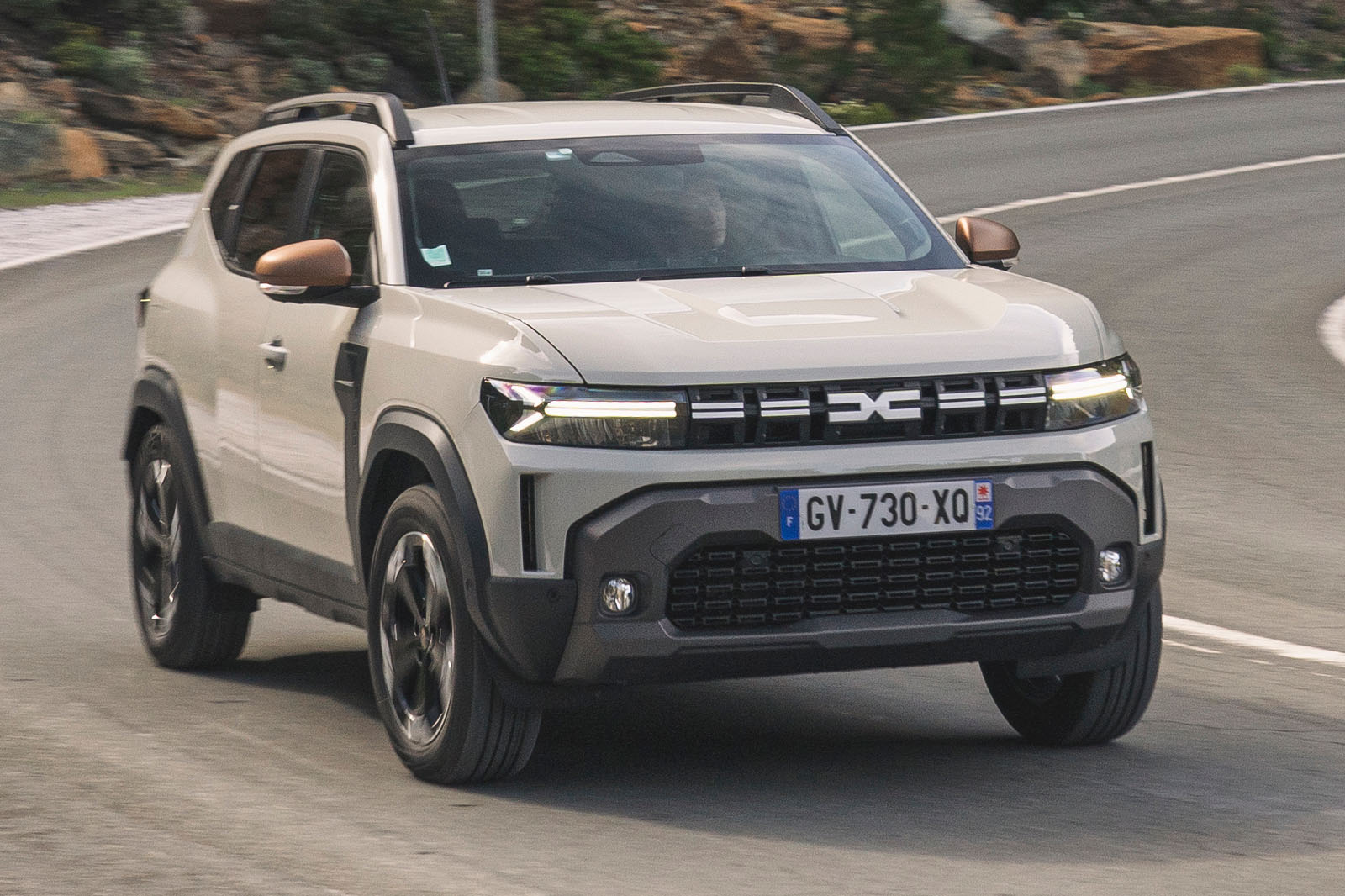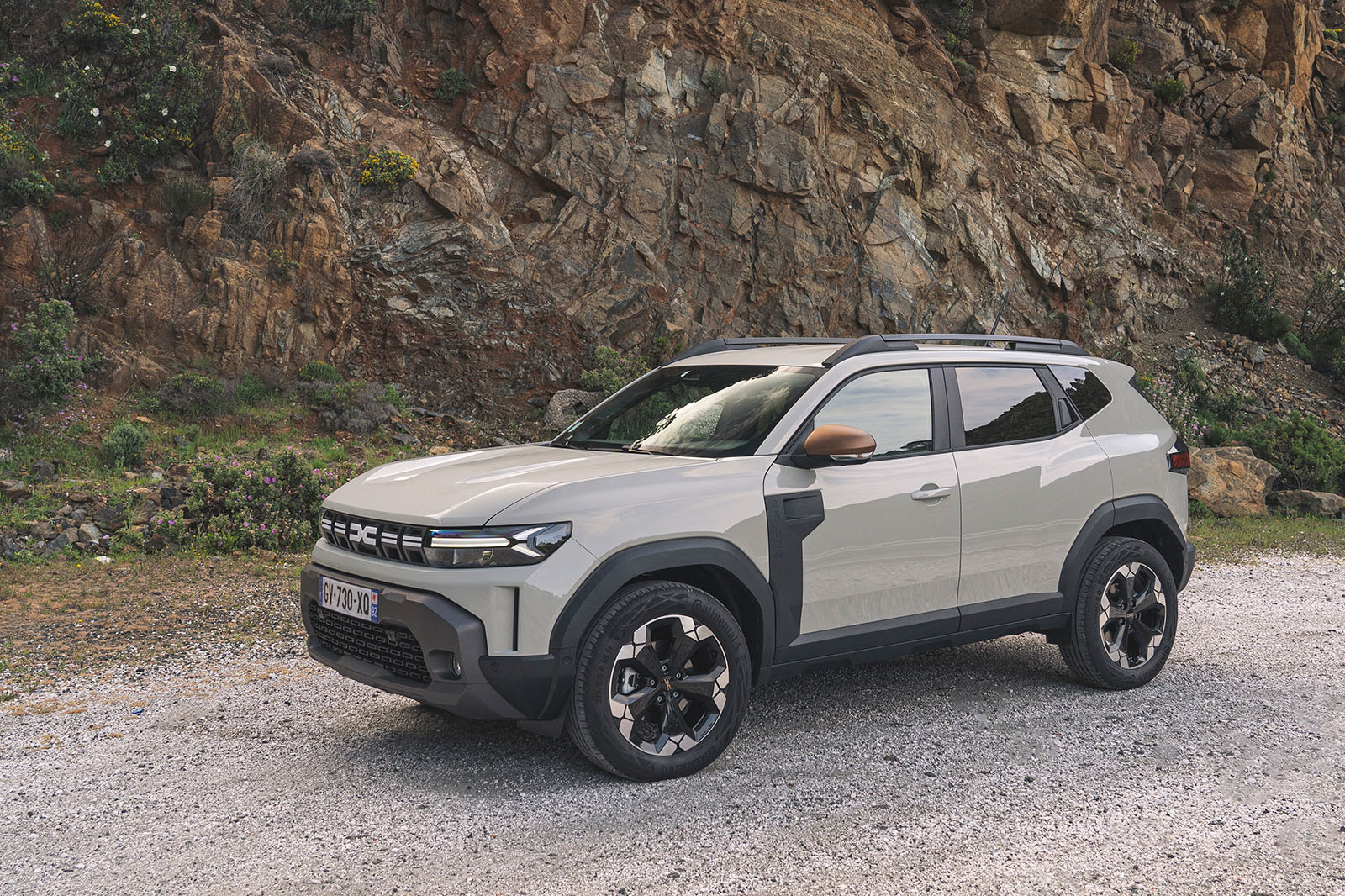Inside is where the outgoing car is feeling its age, being just a bit plain. The new one addresses that. It still doesn’t feel like an expensive, upmarket car: it’s all hard plastic in here, but it’s a bit more designed. The exterior has Y shapes as a motif in the lights and that continues with the interior air vents. Cheaper trims might be greyer, but our test car had a splash of colour on the dashboard and I was really charmed by the ‘jeans’ upholstery. There’s a good selection of trays and cubbies too.
More digital tech has sprung up, something I’d argue the Duster didn’t need. Entry-level trims have analogue gauges with a small screen between the dials, and a phone holder instead of a centre screen. I suspect that might be the best set-up. The test cars at the launch event all had a digital gauge cluster and a 10.1in central touchscreen. Both of them look good and work fine, but the driver display doesn’t really provide much added value apart from looking more modern for the sake of it.

For the centre screen, I expected to see a version of the Google system in recent Renaults, but the Duster actually uses a bespoke system because it’s cheaper to make and doesn’t tread on Renault’s toes. It’s fairly basic and therefore easy to navigate but also quite laggy. A deficit in processing power is probably where the cost saving comes from.
Dacia has stuck with buttons where it counts, though, and that deserves praise. A panel of physical switches operates the climate control and there’s another bank of buttons to the left of the steering wheel. One of those sets all the driver assistance systems to a personal preset, which is the way all modern cars should work, really.
You can sit relatively low, on fairly supportive seats, but the placement of the steering column makes it more natural to sit higher, as does the view over the flat bonnet that this gives you. In combination with a slightly pillboxy view out (blame the lower roofline), it conjures up something of a baby Toyota Land Cruiser vibe.
The engineers say that the switch to the new platform has allowed them to create more interior space within the same footprint. Indeed, rear passengers have a little more leg room and boot space has risen from 445 litres to 594 litres in front-wheel-drive models.
